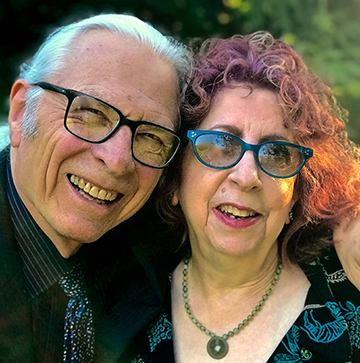 Harry Potter and the Deathly Hallows, Part One, the DVD of last fall’s film release, recently materialized in stores, triggering much excitement among muggles everywhere, and spelling jittery anticipation for the good and evil yet to debut in Part 2 on July 15.
Harry Potter and the Deathly Hallows, Part One, the DVD of last fall’s film release, recently materialized in stores, triggering much excitement among muggles everywhere, and spelling jittery anticipation for the good and evil yet to debut in Part 2 on July 15.
You can count us among Harry’s minions; we’re fans of the movies and even bigger devotees of the books. Anything that motivates young (and not so young) people to sit down and read – in this case, the astounding 4,178 pages that make up the seven Potter tomes – thrills us to pieces. Admittedly, author J.K. Rowling ain’t Steinbeck – she ain’t (okay, isn’t) even Tolkien – but reading her books might inspire inexperienced readers to work their way up to Steinbeck (after they run out of choices in the “fantasy books” section).
Warner Brothers was smart to split the final book into two epic films. At first glance it may appear to be a decision contrived by the studio’s profit pushers: (“OMG! – it’s the last book! No more Potter revenue… unless… yes – that’s it! We’ll split it into two movies!”). But keep in mind that Deathly Hallows runs 784 pages. That many pages, or an equitable amount of film footage, is needed to untangle the myriad story threads that Rowling dangles before us in the Potter saga. The book resolves all the secrets, cleverly kills a passel of beloved and not-so-beloved-able characters, and even conjures a bit of amore for some of the others. Accomplishing all that is a trick that, even with the use of a transforming polyjuice potion, would have been hard to craft – even if into one very long movie.
One hopes that in splitting Deathly Hallows into two films the producers have managed to save a perfect portion for the second half to gracefully maneuver the thin line between “too much” and “not enough.” You may remember the seemingly countless sequential endings in the final episode in The Lord of the Rings film trilogy. We love that trilogy and that final movie, yet from a cinematic standpoint the multiple endings were cringingly awkward. And even so – Tolkien completists still objected that yet other dénouements from the book weren’t tacked on as well.
On the whole, Deathly Hallows, Part One is more emotionally satisfying than earlier installments of the Potter playlist. By emotionally satisfying, of course, we mean satisfying to adult members of the audience, like us. We’re not sure if youngsters find it satisfying in the same way. In fact, we’re not even sure that very young children should be watching Deathly Hallows. The films, like the books that spawned them, grow progressively darker as the series progresses, surprisingly dark, in fact, for stories originally looked on as children’s fare. Still, if the moppets are old enough to have read the print versions, they’ve likely developed the proper perspective on the horrors that haunt Harry’s soul. They’ll understand that collateral damage is pervasive in Harry’s life. He’s “the boy who lived” when his parents did not. He witnessed a schoolmate’s murder in The Goblet of Fire, saw his godfather meet an untimely end in The Order of the Phoenix, and watched the execution of his beloved mentor in The Half-Blood Prince. Presumably, if the young ones have digested those events with no ill effects, they’re equipped for The Deathly Hollows, Part One, and the upcoming Part Two.
As for the rest if us, not even the threat of a dementor’s kiss should keep us away.
Paula and Terry Each have long impressive-sounding resumes implying that they are battle-scarred veterans of life within the Hollywood studios. They’re now happily relaxed into Jacksonville.
 Paula and Terry identify as writers, with an ever-increasing number of published works to support the supposition. They live a primarily pastoral life in the enchanted town of Jacksonville.
Paula and Terry identify as writers, with an ever-increasing number of published works to support the supposition. They live a primarily pastoral life in the enchanted town of Jacksonville.